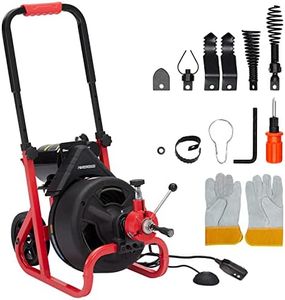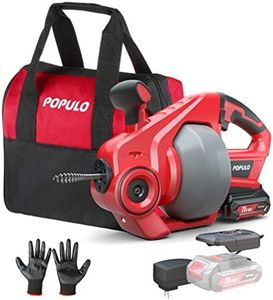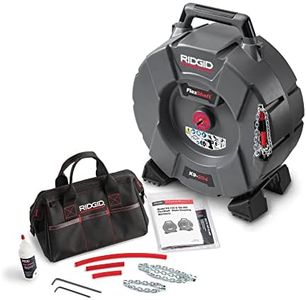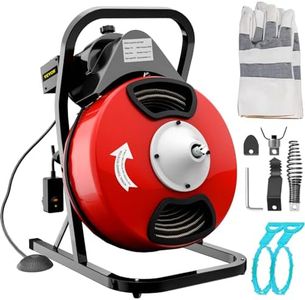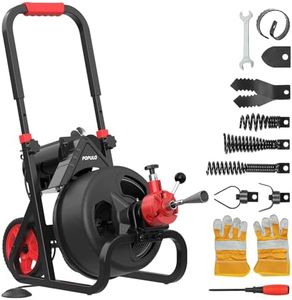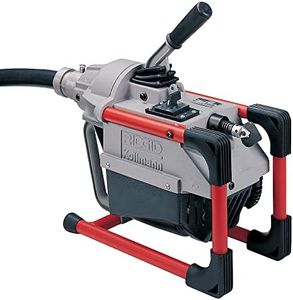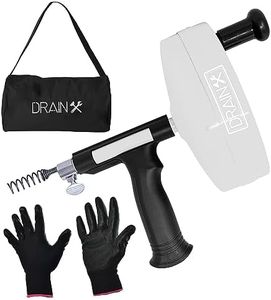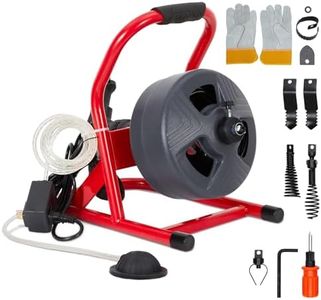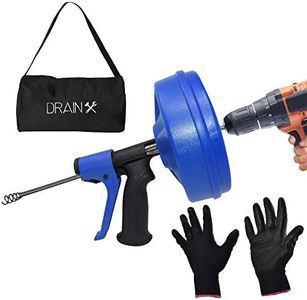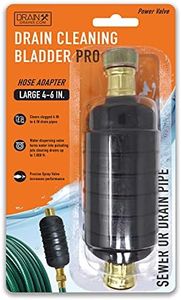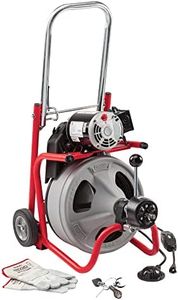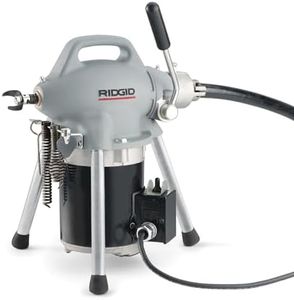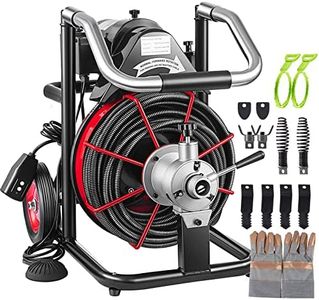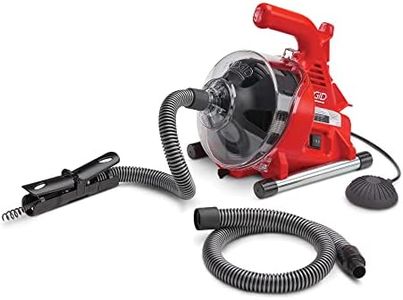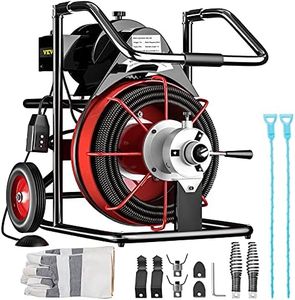We Use CookiesWe use cookies to enhance the security, performance,
functionality and for analytical and promotional activities. By continuing to browse this site you
are agreeing to our privacy policy
10 Best Sewer Machine 2025 in the United States
How do we rank products for you?
Our technology thoroughly searches through the online shopping world, reviewing hundreds of sites. We then process and analyze this information, updating in real-time to bring you the latest top-rated products. This way, you always get the best and most current options available.

Buying Guide for the Best Sewer Machine
Choosing the right sewer machine can be a daunting task, but with the right knowledge, you can make an informed decision that suits your needs. Sewer machines are essential tools for clearing blockages in plumbing systems, and selecting the right one depends on several factors including the type of blockages you encounter, the size of the pipes, and the frequency of use. Here are some key specifications to consider when choosing a sewer machine.Type of Sewer MachineThere are different types of sewer machines, including hand-crank, drum, and sectional machines. Hand-crank machines are suitable for light-duty tasks and small blockages. Drum machines are more powerful and can handle medium to heavy-duty tasks, making them ideal for larger blockages. Sectional machines are the most powerful and are used for the toughest blockages in larger pipes. Choose the type based on the severity and frequency of blockages you encounter.
Cable Size and LengthThe cable size and length are crucial for reaching and clearing blockages effectively. Cable sizes typically range from 1/4 inch to 3/4 inch in diameter. Smaller cables are more flexible and suitable for smaller pipes, while larger cables are more rigid and can handle tougher blockages in larger pipes. The length of the cable determines how far it can reach into the plumbing system. For residential use, a cable length of 50 to 100 feet is usually sufficient, while commercial applications may require longer cables.
Motor PowerThe motor power of a sewer machine determines its ability to clear blockages. Motor power is measured in horsepower (HP) or amps. Machines with higher motor power can handle tougher blockages and are more suitable for frequent use. For light-duty tasks, a motor with 1/3 HP or less is sufficient. For medium to heavy-duty tasks, look for a motor with 1/2 HP to 3/4 HP. For the toughest blockages, a motor with 1 HP or more is recommended.
PortabilityPortability is an important factor, especially if you need to move the sewer machine frequently. Consider the weight and design of the machine. Lighter machines are easier to transport but may have less power. Machines with wheels or handles are easier to move around. If you need to use the machine in different locations, choose a model that balances power and portability.
Ease of UseEase of use is essential for efficient operation. Look for features such as automatic feed and retract, which make it easier to control the cable. Machines with user-friendly controls and clear instructions are preferable. Consider the maintenance requirements as well; machines that are easy to clean and maintain will save you time and effort in the long run.
Safety FeaturesSafety features are crucial to prevent accidents and injuries. Look for machines with built-in safety mechanisms such as GFCI (Ground Fault Circuit Interrupter) to protect against electrical shocks. Machines with enclosed drums or protective covers reduce the risk of cable entanglement. Always follow the manufacturer's safety guidelines and wear appropriate protective gear when operating the machine.
Most Popular Categories Right Now
